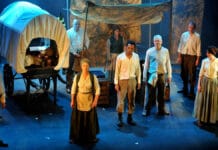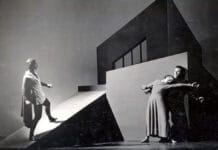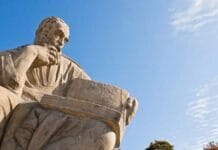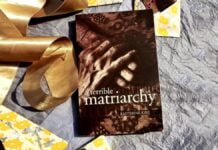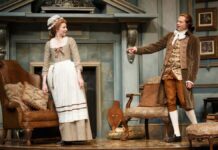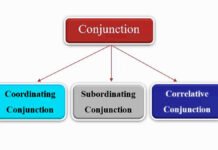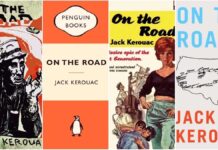The Road Not Taken by Robert Frost is a poem that delves into the theme of decision-making and the complexity of choices in life. It presents a speaker standing at a fork in the road, metaphorically representing a choice between two different paths in life. The traveller in the poem chooses the less travelled road, which symbolizes the unconventional or less predictable choice.
In the poem, the individual arrives at a critical juncture, at a crossroads near “a yellow wood.” As per him, the paths are equally well-traversed and yield anonymous outcomes. The individual is comforted by a thought about returning, even if his path is unsuitable for him, yet in hindsight, he’s aware of the futility of such a thought. Since his current path will bring upon separate paths in itself, disallowing any consequent reversal. The individual concludes on a sad note of how different circumstances and outcomes would have been had it been the “other” path.
The poem is often considered a reflection of the nature of choice and free will. The speaker looks back with a sense of ambiguity and perhaps regret, contemplating how different life might have been had the other path been chosen. Notably, the poem ends with the recognition that the choice made has made “all the difference”, indicating the profound impact of our decisions.
Some interpretations suggest the poem comments on the impossibility of knowing where different choices might lead, while others see it as a celebration of personal agency and nonconformity. The poem is also ambiguous, as it is unclear whether the speaker truly believes the choice made a significant difference or if this is a retrospective justification of the path taken. It invites readers to ponder the influence and outcomes of their own life choices.
Summary
The Road Not Taken explores the theme of choices and their consequences. The speaker reflects upon a moment when he came across a fork in the woods and had to decide which path to take. The two paths symbolize the choices we encounter in life. The speaker regrets that he cannot take both paths simultaneously.
In the end, the speaker chooses the less-travelled path, and this choice is often misunderstood. While the poem is commonly interpreted as an ode to individualism and nonconformity, a closer reading reveals a sense of ambiguity. The speaker acknowledges that both paths are equally worn, and the difference lies more in perception than in the actual wear of the paths.
The poem mediates the nature of choices, the unpredictable outcomes of our decisions, and the human tendency to reflect on what might have been. It suggests that our choices shape our experiences and define our journeys through life. The title, The Road Not Taken, implies that it’s not the chosen path but the unchosen one that becomes the focus of contemplation.
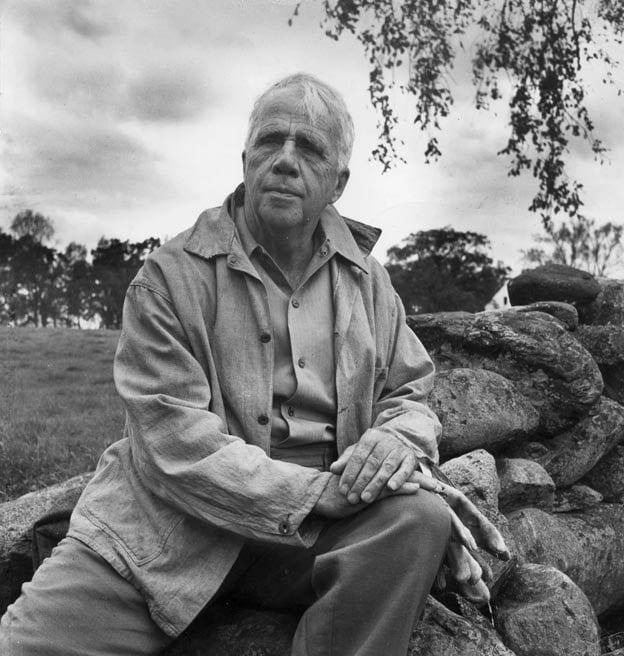
Themes
The thematic idea of The Road Not Taken intrinsically lies in “carpe diem”, judging by its nuance. In conventional carpe diem poems, readers find that the speaker urges one to seize the moment and live in the present. Likewise, in this poem, the poet presents a person unsure about what to do. He thinks about the future and cannot decide based on the present scenario.
This poem also taps into several other themes: choice, uncertainty, indecision, fate, and over-thinking. The central theme of this piece is choice and uncertainty. In this poem, the speaker has to choose and is uncertain about the best one. He thinks what he chooses is not suitable for him.
The next theme that can be found is indecision. Readers can find this theme in lines such as, “Then look at the other, as just as fair,/ And having perhaps the better claim.” Right after these lines, the speaker says both are “really about the same.” That’s why he struggles with indecision.
The speaker is also a fatalist. He relies on it more than the present moment. This mindset creates more confusion in his life. Last but not least is overthinking. This theme is present throughout this piece. Here, the narrator has to make a simple decision. But, he thinks more than what is necessary. It leads to all the confusion not only in his case but also in the case of readers.
Symbolism
The poem is rich with simplistic literal symbolism. Frost sets up a fictional stage for an individual upon which he sets the direction of his life with irreparable consequences. It’s a metaphor for people juggling with lifelong decisions. Seemingly, a prominent poem, The Road Not Taken, has been subjective, catering to multiple interpretations.
In this poem, readers have to be aware of the use of symbols. The first dilemma encountered while reading the text is about the symbolic significance of the two roads. These roads do not refer to two different paths. Instead, Frost points at two superficially identical roads, symbolizing the choices a person has to make. He can only choose one of them as being “one traveller” is impossible on both roads. Besides, readers can find another symbol in “a yellow wood”. It refers to the idea of change.
Literary Devices
Frost uses several literary devices in The Road Not Taken. To begin with, he uses anaphora in the second, third, and fourth lines of the first stanza. Another important device of this piece is enjambment. It can be seen in the third and fourth lines. Using this device, he maintains the flow between the lines and connects them internally.
Readers can find metonymy in the phrase “a yellow wood”. It refers to the season, autumn, and its effect on nature. There is a symbol in the usage of the word “undergrowth”. It stands for the undiscovered regions of the future.
In the second stanza, irony can be found in the line, “And having perhaps the better claim.” This device is explained further below. Also, Frost uses alliteration in the phrase “wanted wear”.
In the last stanza, the poet uses repetition to emphasize a particular idea. For example, “ages and ages” emphasizes the continuity of life’s journey. At the same time, the repetition of the word “I” at the end and beginning of the third and fourth lines is meant to highlight the speaker’s hesitation. Such repetition is also known as anadiplosis. Lastly, the poem ends with a paradox.
Metaphor
Frost uses several metaphors in this poem to bring home his innovative ideas. For example, the poem’s title, The Road Not Taken, contains a metaphor. In it, the “road” is a metaphor for our choice.
There is another metaphor in the “yellow wood”. In this phrase, the poet implicitly compares the idea of change to the yellowish wood. He compares the speaker of this piece to a traveller who is struck while choosing the best option to carry on his journey.
Likewise, readers can find another metaphor in the last stanza. Here, the road “less travelled by” is a metaphor for the choices less preferred by humans. It refers to unconventional things that a pragmatic society doesn’t follow. However, some people choose such unconventional options. So, in the speaker’s case, he has not opted for the rarest choice.
Irony
The ironic undertone is inexorable. The individual anticipates insincerity in his future, looking in retrospect later on. He’s aware that he will sometimes be far from correct and even hypocritical, looking at his life.
Furthermore, he is fully aware that his future self will ultimately deny his past self’s decision, asserting it firmly. In essence, there’s no definitive true path here. As a result, what lies on the other path may trouble an individual with remnant feelings of guilt afterwards.
With ironic undertones throughout, the poem contains hints of remorse due to choosing a path without much knowledge about either. Along the way, the individual wonders about the other path and what’s irrevocably lost in deselecting it.
Imagery
The use of imagery helps readers to imagine the plot of this poem. Frost begins directly with the poem’s primary image of the “two roads diverged in a yellow wood.” By using this visual imagery filled with the colour of autumn, the poet depicts the place where his speaker struggles to make a decision.
He further describes that the roads bent in the undergrowth. It means the speaker cannot see what is ahead of the road. In this way, Frost paints a beautiful picture of two long roads in the woods going in two different directions.
Readers can find more secondary details integral to the main image in the following stanzas. According to the speaker, the roads look more or less the same. Grasses cover them, and one is less travelled than the other. Besides, some pale leaves are lying on the road. On one road, he can see trodden, black leaves. While he cannot see such leaves on the other road.
Providing this description, Frost tries to depict two ideas through these images. The first idea is of the choice that one can make easily by learning from the experience of others. Secondly, the image of the less trodden road depicts a way that can be less travelled, but others less discover it.
Rhyme Scheme
This poem follows a set rhyme scheme. In each quintain, the rhyming convention employed is ABAAB. It means that there are two sets of rhymes. The sound with which the first line ends occurs again in the third and fourth lines. At the same time, the second and last lines rhyme together.
Two roads diverged in a yellow wood,
And sorry I could not travel both
And be one traveller, long I stood
And looked down one as far as I could
To where it bent in the undergrowth;
In the first line, “wood” rhymes with the words “stood” and “could”, which are present in the third and fourth lines. The second line ends with “both”. For rhyming, the poet chooses the word “undergrowth” in the last line. The same scheme is followed throughout the poem.
Choices and Uncertainty
In The Road Not Taken, the speaker chooses between two roads. The speaker’s choice is an extended metaphor for all the choices the speaker and all people must make in life. Through the speaker’s experience, the poem explores the nature of choices and what it means to be forced to choose.
The poem begins with the speaker recounting the experience of facing the choice of which road to take. The speaker’s first emotion is “sorrow,” as he regrets the reality that makes it impossible to “travel both” roads or to experience both things. The poem clarifies that every choice involves the loss of opportunity and that choices are painful because they must be made with incomplete information. The speaker tries to gather as much information as possible by looking “down one as far as I could,” but there is a limit to what the speaker can see, as the road is “bent,” meaning that it curves, leaving the rest of it out of sight. So the speaker, like anyone faced with a choice, must make a choice but can’t know enough to be sure which choice is correct. As a result, the speaker is paralyzed: “long I stood”, contemplating which road to choose.
The speaker eventually chooses a road based on which one appears to have been less travelled, but the poem shows that making that choice doesn’t solve the speaker’s problem. Immediately after choosing a road, the speaker admits that the two roads were “worn … really about the same” and that both roads “equally lay” without any leaves “trodden black” by passersby. So the speaker tried to choose the road that seemed less travelled but couldn’t tell which road was less travelled. By making a choice, the speaker will never get to experience the other road and can never know which was less travelled. The speaker hides from this psychic pain by announcing that he is saving “the first for another day!” But, again, reality sets in: “I doubted if I should ever come back.” Every choice may be a beginning, but it is also an ending, and having to choose cuts off knowledge of the alternate choice, such that the person choosing will never know if they made the “right” choice.
The poem ends with the speaker imagining the far future when he thinks about this choice and believes it made “all the difference.” But the rest of the poem shows that the speaker doesn’t know what it would have been like to travel down that other road—and can’t even know if the road taken was indeed the one less travelled. Further, the final line is a subtle reminder that the only thing one can know about the choices one makes in life is that they make “all the difference”—but how, or from what? Neither the poem nor life provides any answer.
The Road Not Taken is a timeless piece of literature that resonates with readers because of its universal theme of choices and their impact on our lives. While it may seem straightforward, the poem invites readers to reflect on the complexity of decision-making and the inevitability of looking back on the paths not taken.




